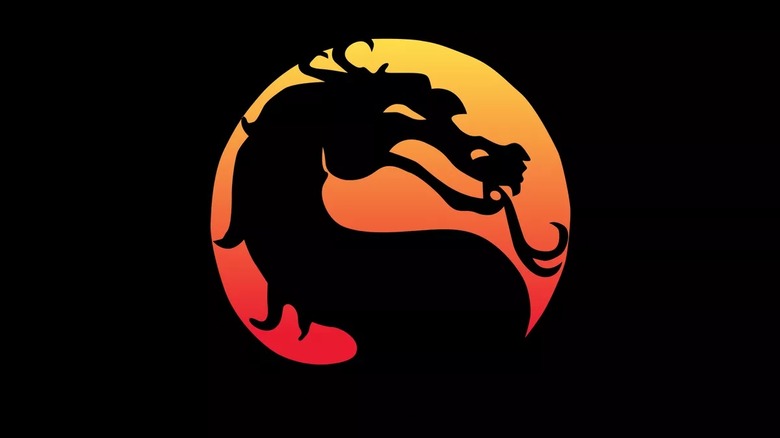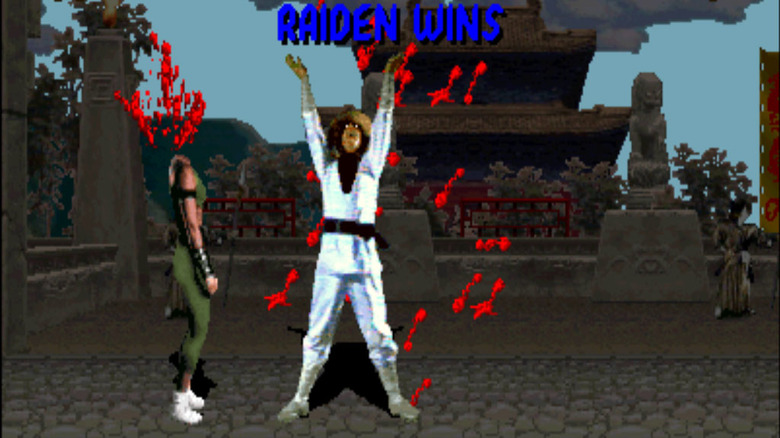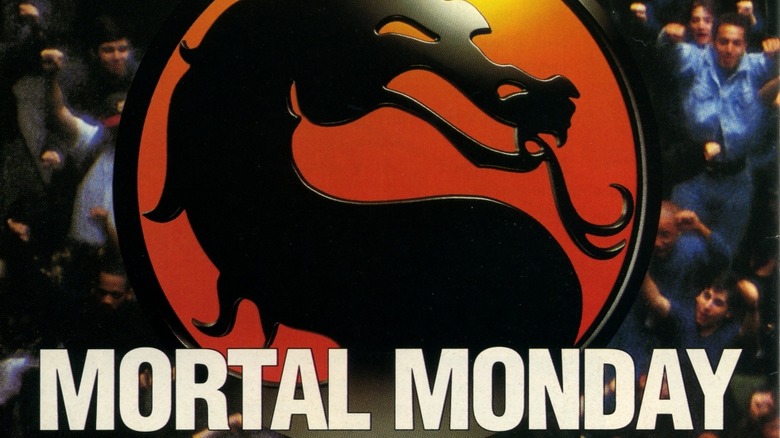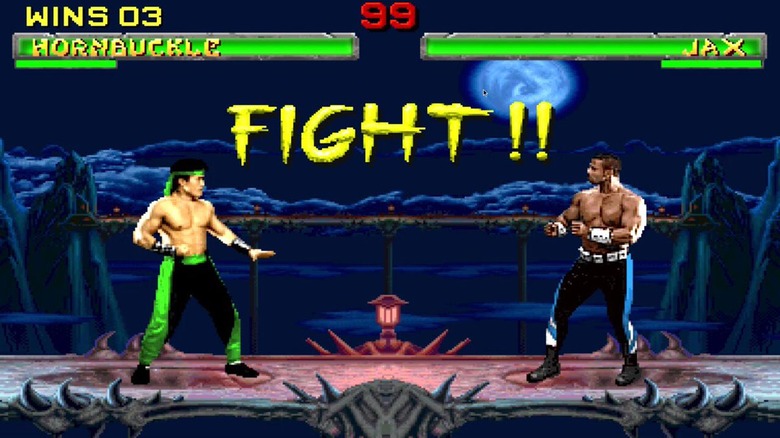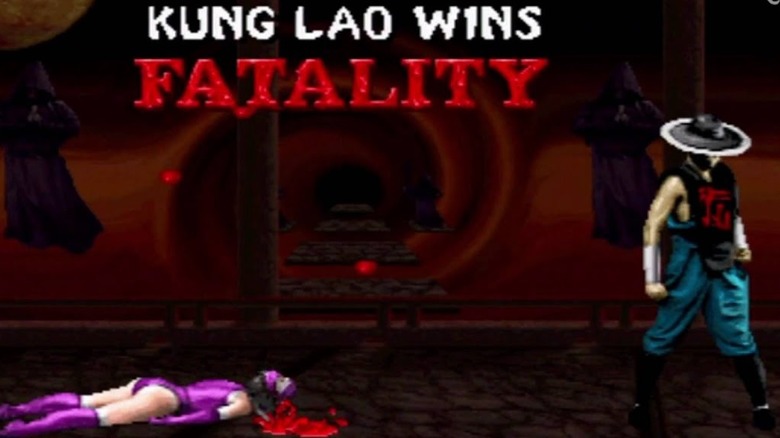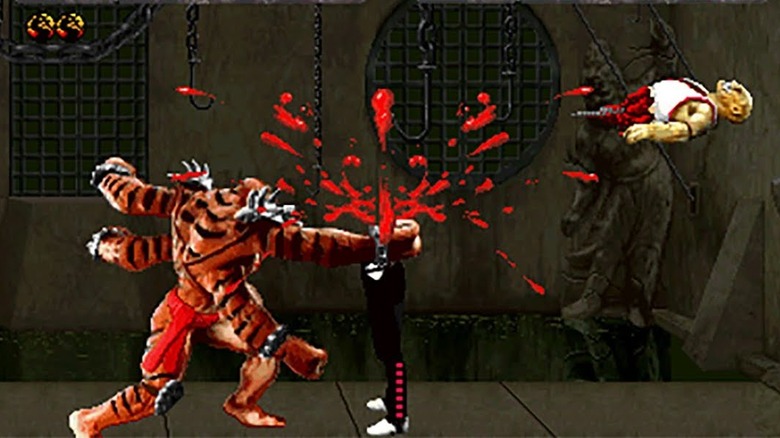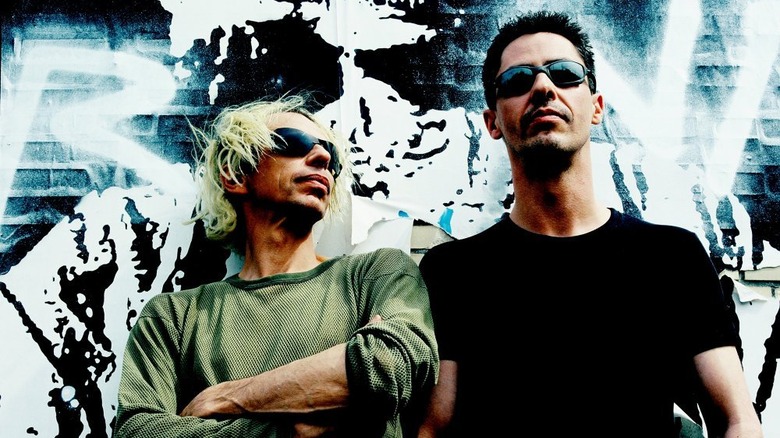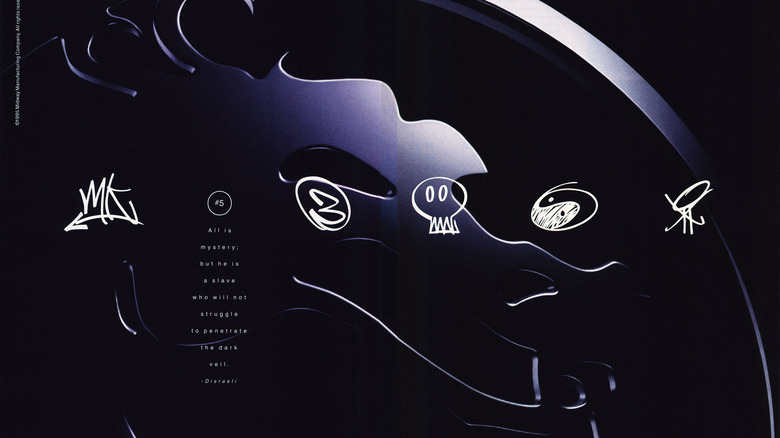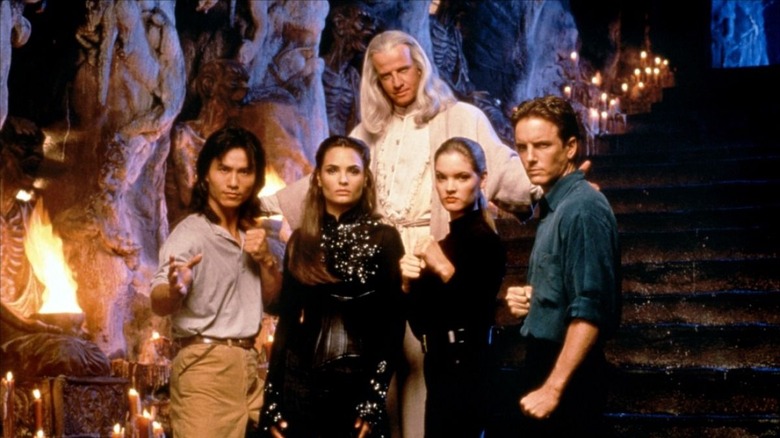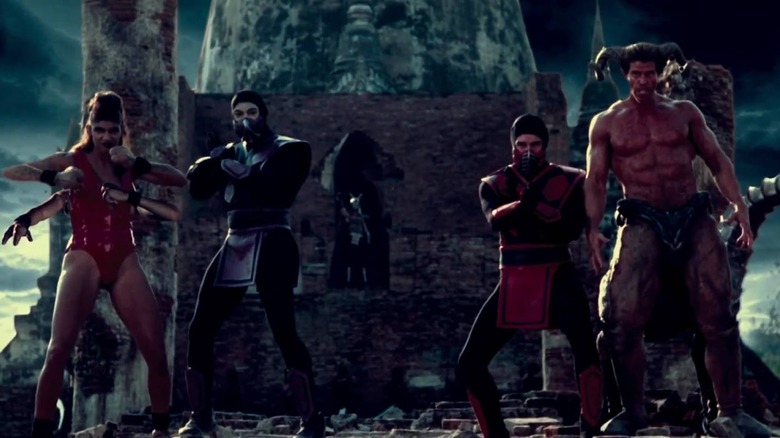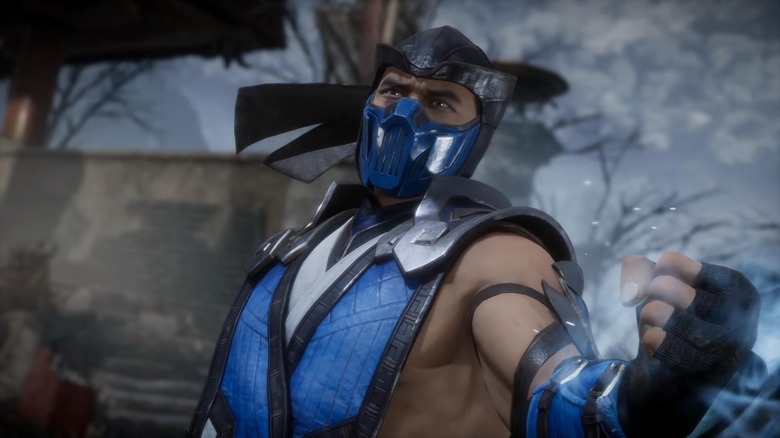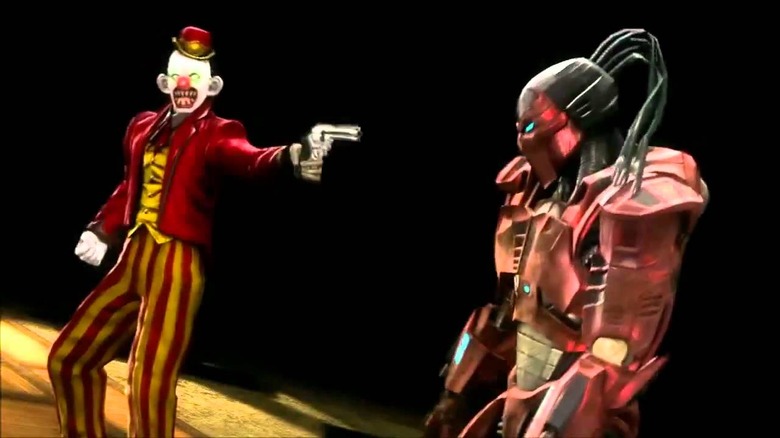Things Only True Mortal Kombat Fans Understand
We've seen a lot of horrifying stuff in Mortal Kombat over the years, but all of it pales in comparison to the soul-crushing realization that Mortal Kombat has been around for two decades. There are full grown adults walking around who've never known the game as being motion-captured at all. It's always been a 3D fighting game for them, and it's never had Friendships. That's wild.
Still, those who were there from the very beginning have some very special connections with this series that some of the younglings might not. The fans that were there through the good times, and the dark times. And by dark times, we mean those poor souls who played Special Forces and Mythologies. And it's in their honor we dedicate this list of the little things only the true Kombatants appreciate.
Remembering Mortal Kombat's blood code after 20 years
One of those things newer fans will never have to deal with is blood being a crucial factor in the console wars. And in the case of Mortal Kombat, in one corner, you had the technically inferior Genesis, and its grainy, voice-less Mortal Kombat port. In the other corner is the SNES, graphically and aurally dominant in nearly every way. Remember this is the system that pumped out a port of Street Fighter Alpha 2 well after anybody was even paying attention to the SNES anymore.
But one single thing set those two apart. Okay, two things: the SNES port also notoriously played like you were trying to get a cement brick to do gymnastics. But the main thing is the holy code that allowed the Segans to bathe in all the glorious blood they wanted, and once it was out there, no one but the foolish would ever live without it. To this day, there is not an MK fan among us that cannot recite it from memory: A, B, A, C, A, B, B.
Meanwhile, in Nintendo World, all the blood was swapped with sweat, the Fatalities were all changed, and everybody hated it.
Well, okay: this one was pretty sweet.
The hype around Mortal Monday
No matter which version of the game you ended up with, the one thing fans all shared was a level of collective hype around Sept. 13, 1993 the likes of which no one has seen before or since. Oh yeah, sure, the day a new Madden or Call of Duty comes out is always a big deal, but none of that compared to when Mortal Kombat had a whole damn day fully on lockdown, bolstered by possibly the most memorable video game commercial ever crafted.
Here was the home console launch of an already beloved arcade game, which released on everything — and we do mean everything — had an absolute war cry associated with it, and a commercial which basically brought every kid eligible to play it together to start a mosh pit, right when grunge was at its peak. It was a perfect storm of a release, unmatched by anything before or since.
Being suckered in by fake characters
In the year 2019, we have Google, Snopes, and Mythbusters. The truth about any claim is out there if you're diligent enough. But back in the '90s, if anyone told you anything, you just had to take it as gospel until evidence hoved into your field of view.
So, as one might imagine, when word got out that Mortal Kombat did, in fact, have a secret character running around, the rumor mill sprang into action and didn't slow up for years, often speeding up once some of those rumors started to pan out. Rumored palette swap ninja characters like Jade, Rain, Skarlet, and Ermac would find themselves becoming permanent staples of the series. But those are outliers among a field of nonsense characters like Hornbuckle, Red Robin, and Nimbus. There's far more of the latter category, and sorting through them all back in the '90s was an eye-rolling nightmare. Maybe consider that before clicking on yet another impassioned plea to put Shaggy in MK11.
Failing to decapitate someone with Kung Lao's hat
The split-second choreography needed to execute a Fatality in Mortal Kombat, especially in the older titles, could qualify for its own section here entirely, but there's a special infuriated place in every fan's heart for one particular MK2 Fatality: Kung Lao's Hat Decapitation.
Ironically, Kung Lao's got some of the easiest finishers in the game otherwise. His Hat Split, along with his stage Fatality, involve simply spamming forward and hitting a button. The decap, too, is pretty simple.
But, there's a catch. Just like in real life, you have to aim the hat up at just the right moment, or it just sails past your opponent. And if you ever want to witness the ugliest tantrum a gamer can throw, see someone fight a hard won match with Kung Lao and then screw this Fatality up. The white-hot fury can be seen from space.
The art of no-punch fighting in Mortal Kombat
Everyone knows the true sign of a badass is someone who fistfights one handed. Now, being able to win one-handed is a whole other story, as many a person with missing teeth can tell you. But hardcore Mortal Kombat 2 fans, at one point or another, have been that badass.
Mortal Kombat 2 was the first, and thankfully last, time you had to deal with straight-up handicaps in order to perform the game's best and/or weirdest finishing moves. Which means hardcore fans got really good, really fast at playing the game like a boss.
Which also meant the sheer humiliation of getting hit with one of those finishers and realizing, with no small amount of embarrassment, you just got bodied by someone who didn't even use Low Punch the entire match, or just used kicks and nothing else. And you can't even stay mad: the end result is usually worth it.
Techno Syndrome forever
Here's a fun game: You know Ewoks, right? The fluffy little hostile teddy bears from Return of the Jedi? Quick question: How do you know their name? When do they say it in the movie? Trick question; they don't, at least not out loud (they are listed in the end credits). The name was just so ubiquitous, thanks to the toys and the cartoon and TV show, that it just locked itself into pop culture forever.
That brings us to "Techno Syndrome" by The Immortals. There's only a few places anyone would've heard that track: 1994's Mortal Kombat: The Album, the Sega CD port of the first game (the song was track 17 if you put the game in a CD player), and the movie, which is now a cult classic. Afterward, it became a bit of a distant pop cultural memory. The games haven't even utilized it until MK11's launch trailer. But you can easily identify who was into it at that exact, perfect moment in series history by who gets hyped on an instant, Pavlovian level the second that gong hits. Beyond Fatalities, it is the the most enduring symbol of all things Mortal Kombat.
The hunt for Mortal Kombat 3 codes
As much as the hunt for secret characters turned every MK fan into a conspiracy theorist, that was nothing compared to when MK3 rolled around with a code tumbler that showed up between matches. The idea is simple enough: there are six slots, each with a set of symbols, and with the right combination, fun stuff unlocks.
And for the better part of a year, those codes were everywhere
.
They were in magazines, they were in cartoons, they were in the movie, they were on billboards. And without an internet to coordinate efforts on the wide scale we would now, there was no way to really put all this stuff together without a whole lot of trial and error, which occasionally might only result in a "Come see the Mortal Kombat live tour!" message onscreen, which is some real "Be Sure To Drink Your Ovaltine"-level betrayal.
The last defenders of the Mortal Kombat film
Famously, film adaptations of video games are pretty much a sewer of quality, even if Detective Pikachu is trying to turn that around with both critics and mainstream audiences. But ask any god-fearing Mortal Kombat fan about the 1995 film, and prepare to feel the love.
And for good reason. The Mortal Kombat movie is, objectively, just the dumbest movie imaginable. It had a few half-decent fights, some interesting production design, and the best industrial soundtrack 1995 could offer, but it's ultimately a poor man's Enter The Dragon riff. If it didn't have the video game license, it would be found floating at the bottom of some Walmart's bargain bin, never to be seen or heard from again.
To anyone familiar with the games, however, it is basically the best kind of drunken fan service, one that doesn't fully recreate the games in live action but embodies their goofy spirit wholeheartedly. Pity those who weren't in an actual theater to hear an audience of nerds go absolutely bonkers when that MK2 voice announces Reptile. There is oh so much to love if you have just the right attachment to the source.
The tragedy of Mortal Kombat: Annihilation
The love that hardcore Mortal Kombat fans have towards the 1995 film is precisely inverse to how much those same fans would burn every single copy of its despicable sequel if they could. The wacky thing is that on paper, Mortal Kombat: Annihilation is pretty much exactly what the sequel needed to be: Shao Kahn comes to Earth with a crapload of MK3 characters to wreak havoc, and Raiden has to rally the Elder Gods to defeat them. But in all the ways the first film got the fine details right, Annihilation does them worse, and on a budget hovering somewhere around the cost of a couple of combo meals at Wendy's. Sounds like hyperbole, but you explain how this was something someone looked at in dailies and thought, yep, this is fine.
The sequel's fate is mostly being resigned to the garbage can of history, but Mortal Kombat fans have never forgotten, and never will.
Which Sub-Zero is which?
So the story goes: the original Sub-Zero, Bi-Han, is the guy who killed Scorpion's family, and Old Flamehead came for vengeance in the first game. In MK2, the new Sub-Zero is Bi-Han's brother, Kuai Liang, who is also the pasty white guy Sub-Zero in MK3/Ultimate MK3/Trilogy. Except Ultimate also has a Classic Sub-Zero, who still wears the mask. But it also has Noob Saibot, who is actually retconned later to be an undead version of Bi-Han, the original Sub-Zero, who also shows up later after the timeline reset in Mortal Kombat 9, but the new Sub-Zero is defeated in battle and turned into Smoke, but after Quan Chi resurrects his soul, he becomes a new Sub-Zero and if you've kept up with all of this, nodding all the way, congratulations, you are 100% pure Mortal Kombat fan. Please go outside and get some sun, it's good for you, we swear.
The Joker and the Fatality thief
Mortal Kombat fans always want to protect at all costs the beloved violence that has been the bloody bread and butter of the whole franchise since minute one, for good reason. So, the little things that might not bug a casual player might cause a fury you may never witness. And there is no greater example of this than what happened when NetherRealm decided to cross Mortal Kombat with the DC Universe.
That doesn't sound like the worst idea now, since we've gotten two pretty good Injustice games using a modified Mortal Kombat fighting engine. But the first time out for this little experiment didn't exactly go down the smoothest, mostly because of that T-rating slapped on the box. Despite what Zack Snyder might've led you to believe, Superman doesn't go around snapping people's necks for the hell of it. But the one source of violent glee came, of course, from the Joker, who did a hilarious fake gun gag for his Fatality that was far and away the best thing in the game. So, of course, thanks to the T-rating, it got edited down, to the wailing and gnashing of many a fan.
Then when Shang Tsung showed up in MK9 in a clown outfit, shooting his opponents, while casual fans were confused but delighted, hardcore fans mostly just sat back, arms crossed, and sighed, reminded of that time they tried to do a bloodless MK game.

